There is always a new trend in dieting; Paleo, Vegan, Dukan, Atkins. It seems there’s a new miracle diet found almost annually that should radically change how we eat. The current trend appears to be low carb, high-fat diets, such as the keto diet.
So, is Ramen keto friendly? No, ramen is not keto friendly. If you’re on a ketogenic diet, you can’t eat regular ramen noodles because they’re full of carbohydrates.
But, as I learned with Sukiyaki, there are alternatives to traditional noodles that can complement a keto diet nicely, and that includes some ramen.
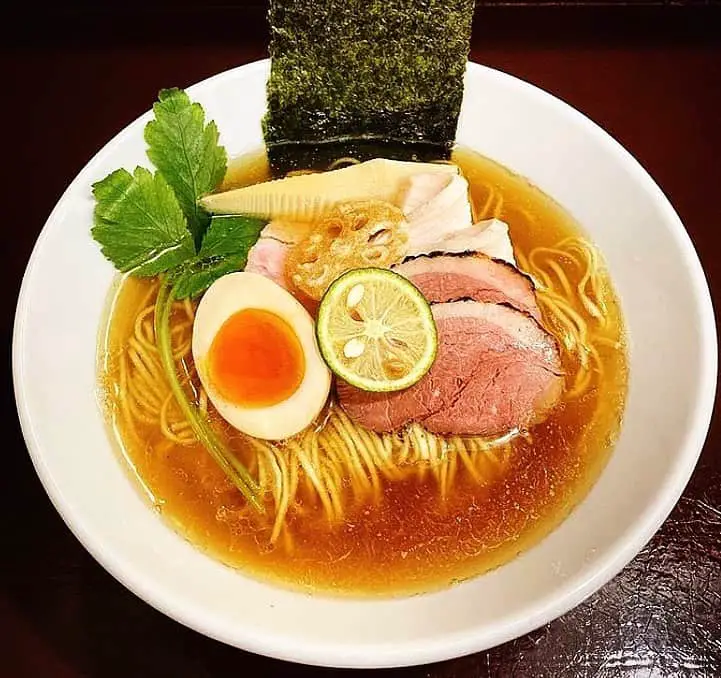

To be honest, it can be a little hard to keep track of which ones are legitimately healthy. And for foodies like us, this raises some concerns. It can make exploring cuisines from other countries a little limiting, particularly Asian cuisine.
And in this post, I’ll walk you through the most delicious keto ramen noodles on the market. They’re admittedly different from traditional ramen noodles, but they don’t sacrifice the great taste you’re craving.
It should be noted, before continuing, that the keto diet is not for everyone. While it’s extremely popular, it’s not recommended for anyone pregnant or those suffering from kidney problems.
The Best Noodle Options for Keto Ramen
There are plenty of alternatives to traditional, carb-loaded ramen noodles, but it’s not just the noodles that are a concern. Often, the broth itself can have significant carbs, so it’s important you make sure the broth is keto as well. Here’s the best of what I found.
Shirataki Noodles
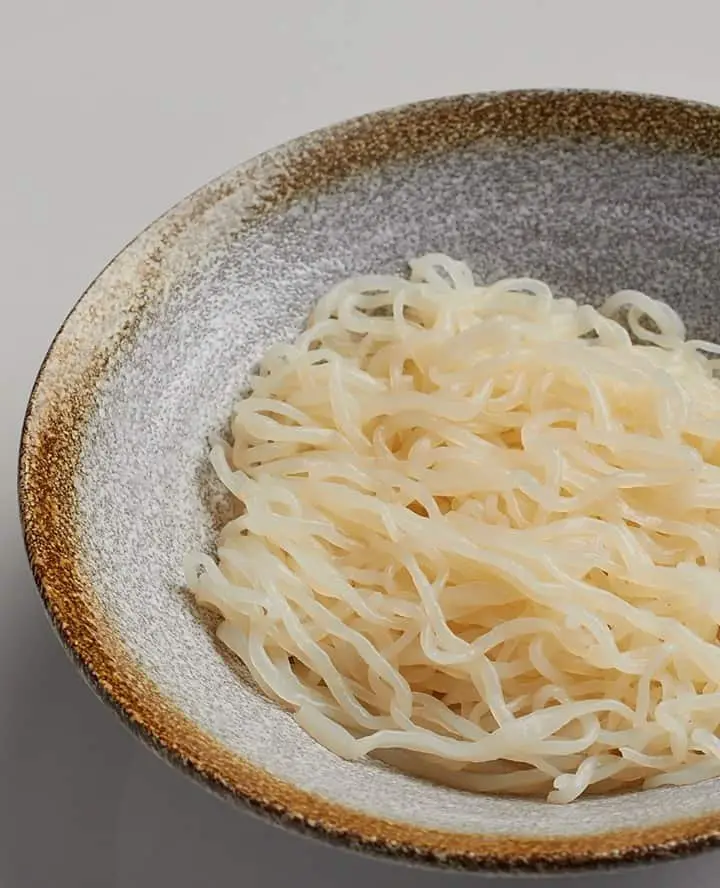
I’m of the opinion that any substitution for ramen noodles should never sacrifice the slurpy, delicious texture of the classic stuff. And if you’re looking for a recipe that perfectly apes that feeling in your mouth, look no further than Shirataki.
These yarn starch noodles are low in carbohydrates but are high in fiber. Mor importantly, they retain that same springy bite that ramen is known for. These noodles are typically sold soft in water, so you’ll want to wash them thoroughly prior to cooking to get rid of any residual fishy smell and taste.
Zucchini Noodles
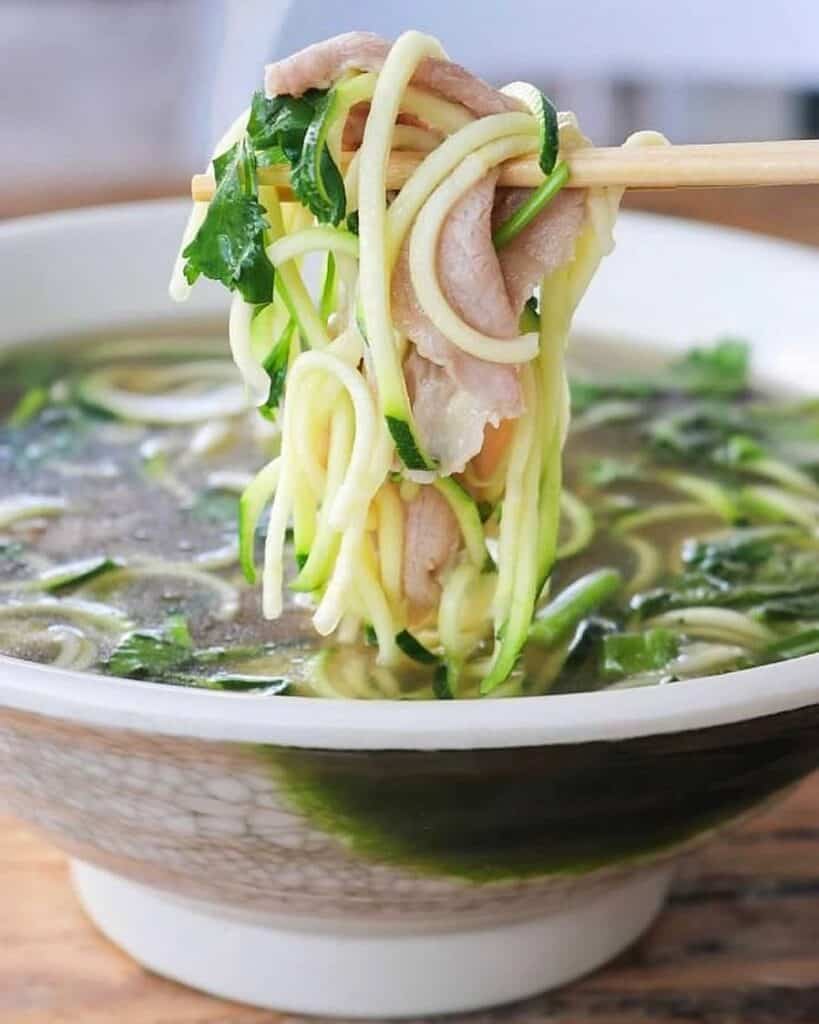
It’s always smart to slip in a little extra vegetable into your meal, especially when they’re this delicious. Zucchini is probably the best alternative for keto diets, though there are other grain-based noodles if you’re eating with friends who don’t subscribe to your particular eating philosophy. Let them have the sweet potato or butternut squash. Tempting though they may be, zucchini is healthier and, in my opinion, tastier.
If you’d like, I’d recommend buying a spiralizer to do it yourself rather than buying them pre-packaged, but either way works. There are plenty of other vegetables you can experiment with, but I thought zucchini worked best.
Kelp Noodles
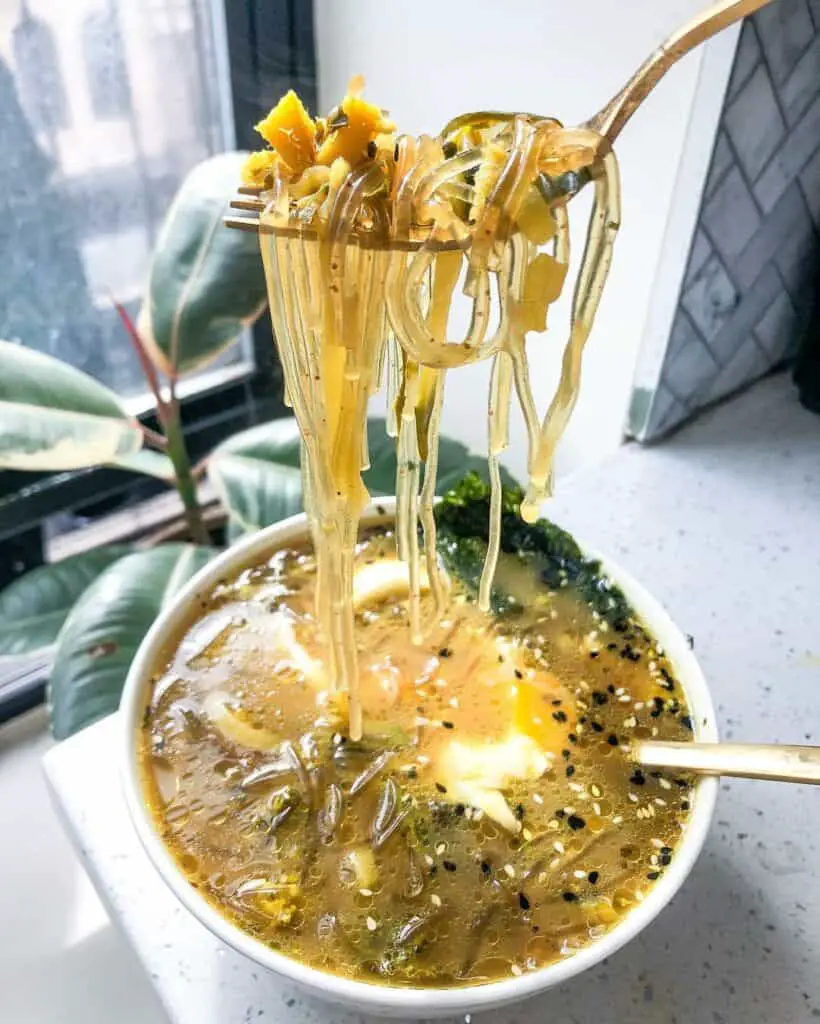
Kelp noodles may sound strange, but they’re actually the first thing I thought of when I was considering keto-friendly meals. What’s particularly wonderful about kelp is that it’s not only keto-approved, it’s loaded with healthy iodine, calcium, vitamin K and iron as well. So you’ll be sure to get a healthy meal, while still getting a rich, fascinating flavor. Seafood like kelp may take some getting used to, especially if you’re a first-timer, but it’s a mysterious dish that grows on you over time.
What’s more, you don’t even have to necessarily cook kelp noodles. They’re just as good raw!
Spaghetti Squash Noodles
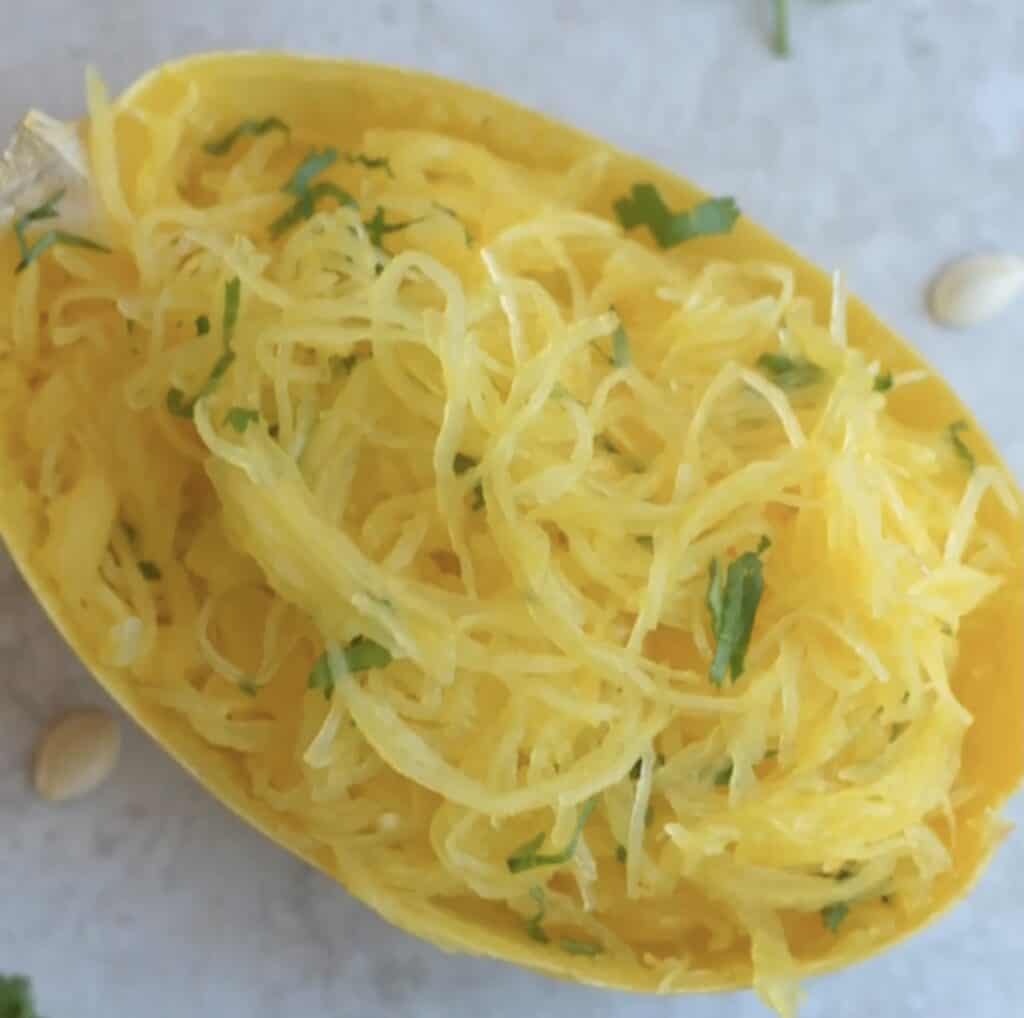
Spaghetti squash is a little higher in carbs than most of the others on this list, but there are ways to prepare it that make it perfectly keto-friendly. Just cut the squash in half, then cover both sides in olive oil, pepper, and salt, and set your oven to 350. Then bake for just under 30 minutes. You should be able to break up keto-friendly strands of noodle with a fork, and you won’t regret it.
Edamame Noodles
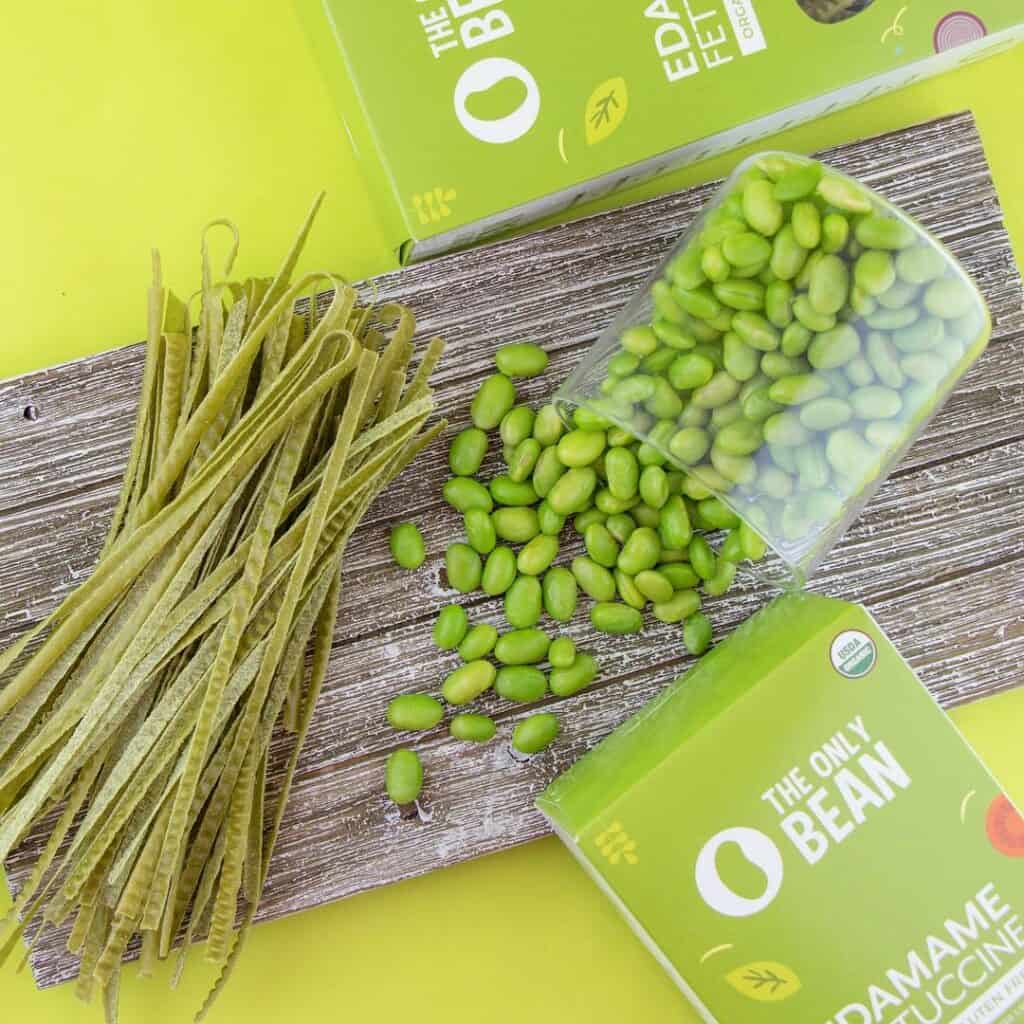
Admittedly, I didn’t try this one myself. Edamame noodles are a little higher in carbs than the rest on this list, so I didn’t want to risk it. The standard serving for edamame noodles says 11 carbs, and that can be a little risky when you’re trying to stick to 20 a day. But I wanted to include it here because a friend did try it, and reported that it tasted almost exactly the same as real ramen noodles.
So if you have a cheat day, this would be a good excuse.
Remember The Broth
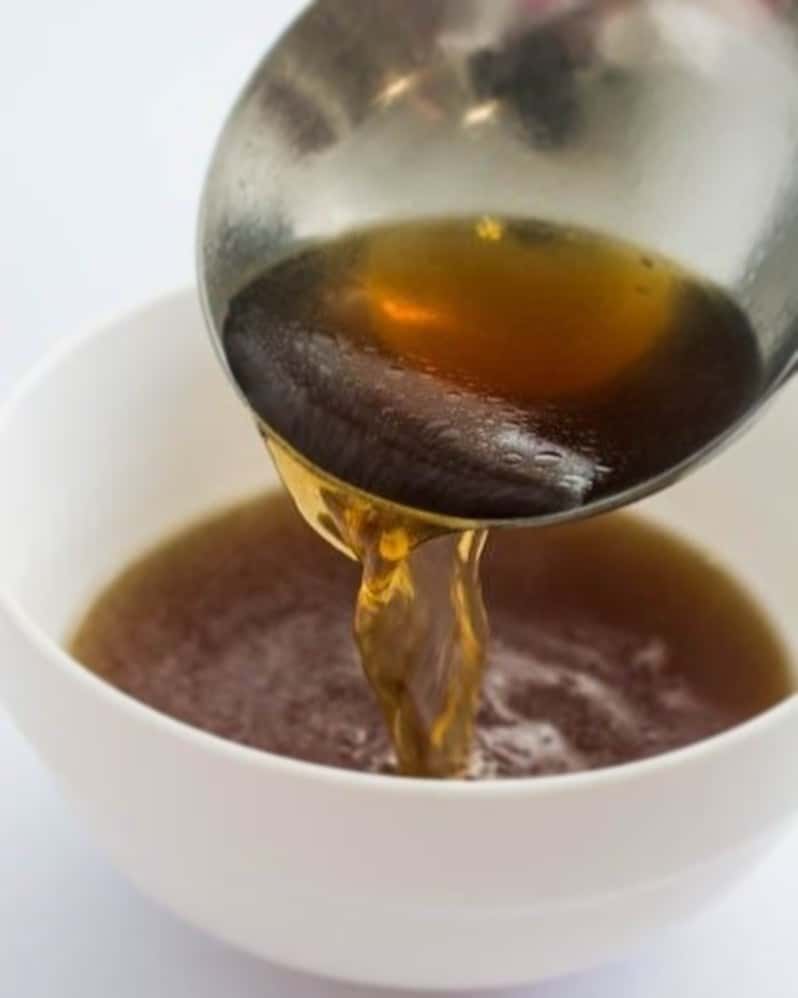
But the noodles, as I mentioned, aren’t the only thing you need to pay attention to. It’s still vital that the broth you choose be right for a keto diet. There are four main ramen broths available, with a lot of regional versions that you may or may not have access to. Shio is a salt broth, Shoyu is soy sauce. There’s also miso paste broth and tonkatsu, or pork bone broth.
For our purposes, you’ll have to check the label to determine if it’s the right broth for a keto diet. You don’t want more than 3 carbs per serving listed on the broth.
Weipar, a Chinese soup stock that comes in a very easy to recognize red can, is a personal favorite that matches this description. Fortunately, it’s easily available on Amazon, so you shouldn’t have trouble finding it.
What About Toppings?
Fortunately, most of what you like putting on your ramen is already keto-approved. Things like soft-boiled eggs, mushrooms, shredded chicken, scallions, and baby bok choy are perfectly fine on a keto diet, so unless you plan on putting something unorthodox on your ramen, you shouldn’t have to worry about too many restrictions. As usual, check around online to be sure it’s agreeable, and if it is, enjoy!
The important thing is that you are able to stay on your chosen diet without ever having to sacrifice many of the comfort foods such as ramen you usually enjoy.
